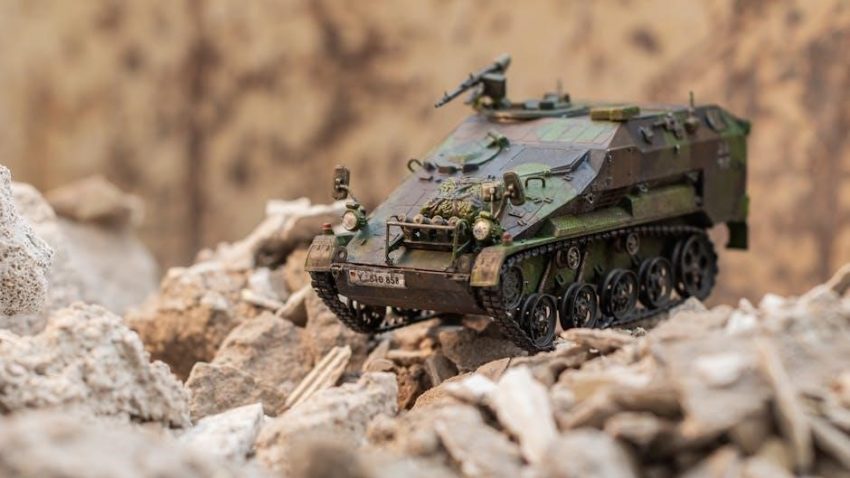Land warfare armored tactics involve the strategic deployment of armored vehicles to achieve battlefield objectives. Rooted in World War I, these tactics emphasize mobility, protection, and firepower. Modern armored units integrate advanced technologies, enabling precise maneuvers and enhanced survivability. This approach remains central to contemporary military strategies, adapting to evolving threats and battlefields.
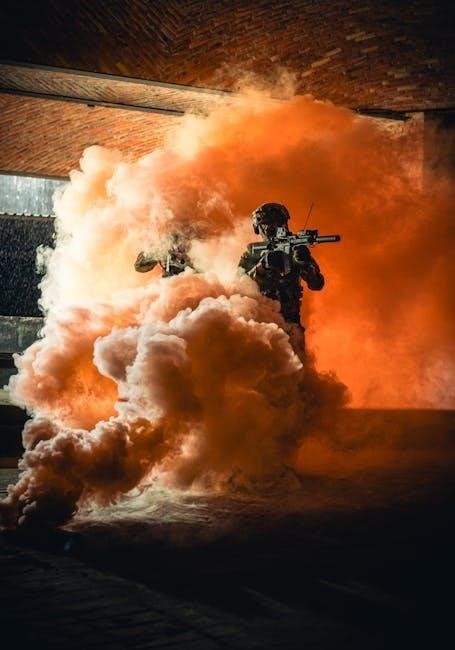
Historical Development of Armored Warfare
The historical development of armored warfare traces its origins to World War I, where the introduction of tanks revolutionized battlefield tactics. Initially, armored vehicles were developed to break through entrenched defensive lines, overcoming the stalemate of trench warfare. Early tanks were slow, cumbersome, and limited in firepower, but they marked the beginning of a new era in military strategy.
During the interwar period, countries like Germany, the Soviet Union, and Britain refined armored tactics, emphasizing mobility and maneuver. The concept of “blitzkrieg” emerged, focusing on rapid, decisive offensives using combined arms formations. This approach was decisively demonstrated during World War II, where armored divisions played a central role in shaping the outcomes of battles across Europe and North Africa.
Post-World War II, armored warfare continued to evolve with advancements in technology. The development of main battle tanks, anti-tank missiles, and precision-guided munitions transformed the capabilities of armored units. Modern armored vehicles now feature advanced armor, fire control systems, and network-centric warfare capabilities, enabling greater lethality and survivability on the battlefield.
Throughout its history, armored warfare has been shaped by the interplay of technology, doctrine, and the operational environment. From the early experiments with tanks in World War I to the sophisticated systems of today, armored warfare remains a cornerstone of modern land warfare, continually adapting to meet the challenges of contemporary conflicts.

Core Principles of Armored Warfare
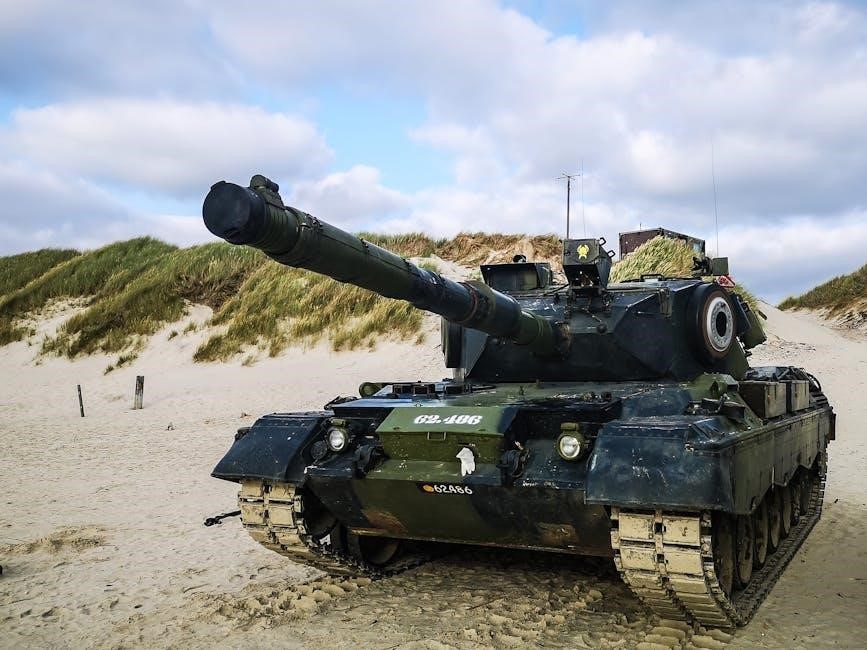
The core principles of armored warfare emphasize mobility, protection, and firepower. Armored units leverage speed and maneuverability to outflank enemies, while robust armor ensures survivability. Coordination with infantry and air support enhances effectiveness. Terrain utilization and adaptive tactics are critical, ensuring armored forces remain decisive in modern combat scenarios.
Mobility and Maneuver in Armored Tactics
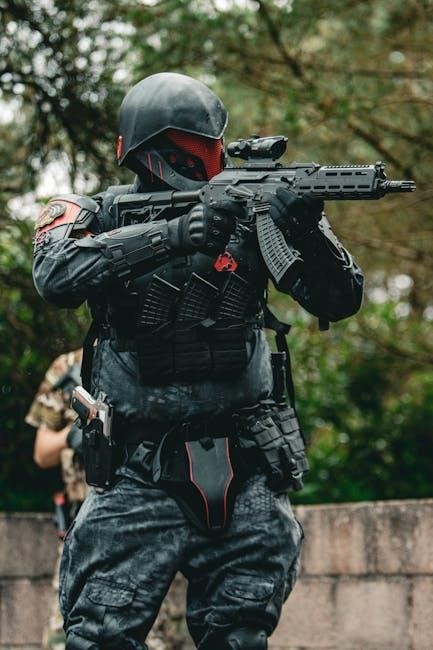
Mobility and maneuver are foundational to armored tactics, enabling forces to exploit terrain, surprise enemies, and maintain operational tempo. The introduction of tanks in World War I revolutionized warfare by breaking static trench lines, demonstrating the power of mobile armor. Armored units combine speed, agility, and firepower to outflank adversaries, creating decisive advantages on the battlefield.
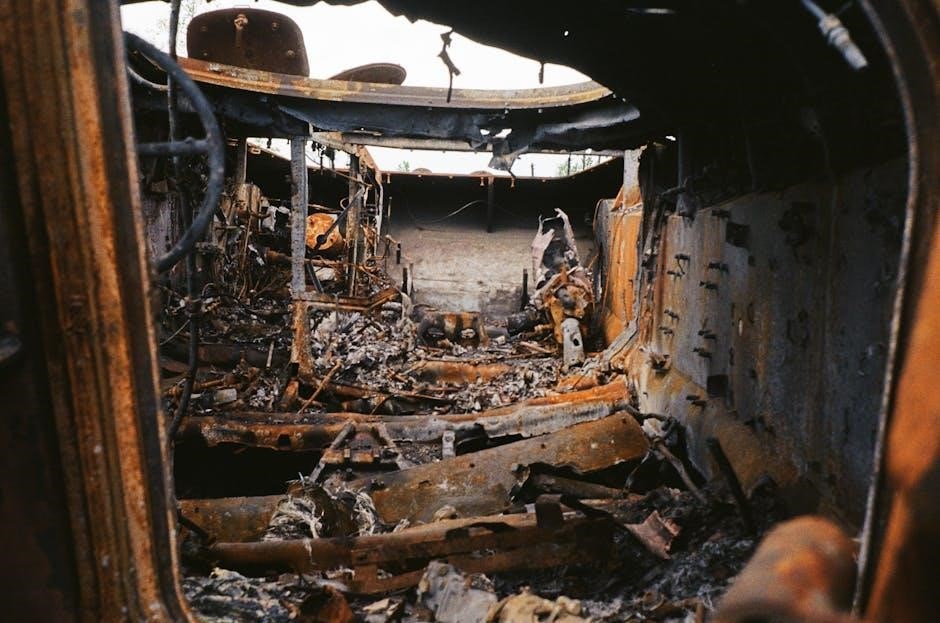
Modern armored tactics emphasize rapid repositioning to avoid enemy counterattacks and exploit vulnerabilities. Advanced tracked and wheeled vehicles, equipped with hybrid drivetrains and lightweight armor, enhance mobility across diverse terrains. Coordination with air support, infantry, and artillery further amplifies the effectiveness of armored maneuvers, ensuring seamless integration in combined arms operations.
Terrain plays a critical role in armored tactics, with open fields favoring rapid advances, while urban environments necessitate cautious, precision maneuvers. The ability to adapt to changing landscapes and enemy dispositions is vital, requiring skilled commanders and real-time intelligence. Technological advancements, such as autonomous navigation systems and predictive maintenance, further enhance the mobility of modern armored forces.
In contemporary conflicts, the balance between speed and survivability remains paramount. Armored units must balance rapid movement with the need for protection, leveraging cover and concealment to minimize exposure. The synergy of mobility and maneuver ensures armored forces remain a dominant force in land warfare, capable of shaping outcomes across the modern battlefield.
Protection and Survivability of Armored Units
Protection and survivability are critical components in the effectiveness of armored units on the battlefield. Modern armored vehicles are designed to withstand a variety of threats, from anti-tank missiles to improvised explosive devices. The use of advanced materials, such as composite armor and reactive armor, has significantly enhanced the ability of these vehicles to resist penetration and minimize damage.
Survivability in contemporary conflicts is not solely dependent on physical protection. Modern tactics incorporate active protection systems (APS), which detect and neutralize incoming threats before they can impact the vehicle. Additionally, electronic warfare capabilities and countermeasure systems further enhance survivability by disrupting enemy targeting systems and communications.
Camouflage and concealment also play a crucial role in protecting armored units. By blending into the surroundings and utilizing cover, vehicles can reduce their visibility to enemy forces. This strategic positioning, combined with rapid movement, makes it difficult for adversaries to target them effectively.
Moreover, the development of unmanned and autonomous armored systems is reshaping the concept of survivability. These systems can operate in high-risk environments without endangering human lives, providing critical reconnaissance and firepower while maintaining operational continuity.
Modern Advancements in Armored Tactics
Modern armored tactics integrate cutting-edge technologies, including unmanned systems, AI-driven decision-making, and active protection systems (APS). These advancements enhance precision, survivability, and operational efficiency. Network-centric warfare enables real-time data sharing, while advanced propulsion systems improve mobility. Such innovations redefine land warfare, ensuring armored units remain dominant on future battlefields.
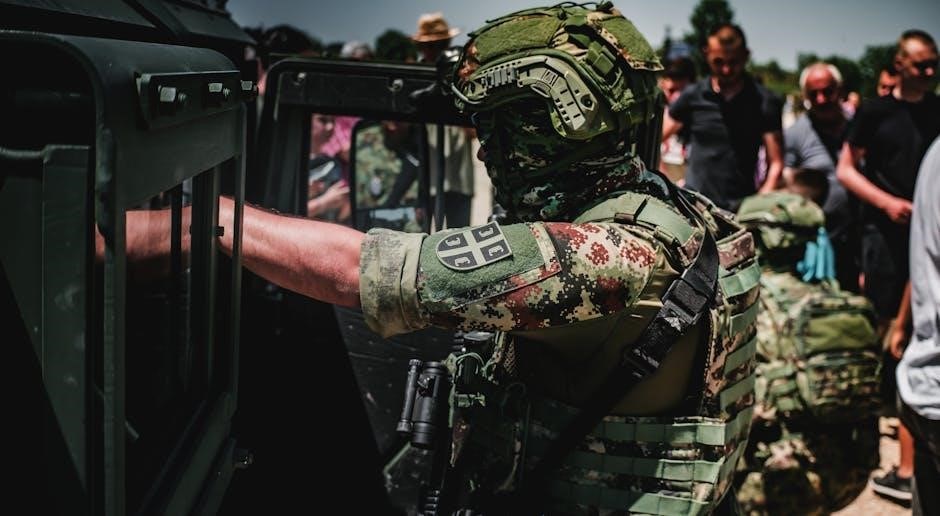
Technological Innovations in Armored Vehicles
Recent advancements in armored vehicle technology have revolutionized land warfare tactics, enhancing survivability, lethality, and operational efficiency. Modern armored vehicles now feature active protection systems (APS), which detect and neutralize incoming threats like anti-tank missiles. Additionally, the integration of unmanned systems allows for real-time reconnaissance and precision targeting, reducing risks to human operators. Artificial intelligence (AI) plays a pivotal role in optimizing decision-making processes, enabling faster and more accurate responses on the battlefield.
Network-centric warfare capabilities have been seamlessly integrated into armored systems, allowing for seamless communication and data sharing between units. This enhances situational awareness and enables coordinated maneuvers. Furthermore, advancements in composite armor and active defense systems have significantly improved vehicle protection against advanced anti-tank weapons. The development of next-generation propulsion systems has also increased mobility, allowing armored units to operate more effectively in diverse terrains.
The introduction of autonomous and semi-autonomous systems is reshaping armored tactics, enabling missions like reconnaissance and logistics support without human intervention. Modern armored vehicles are also equipped with advanced sensor suites, including thermal imaging and battlefield management systems, which enhance targeting accuracy and operational flexibility. These innovations ensure that armored forces remain a decisive factor in modern land warfare, capable of adapting to evolving threats and operational demands.

